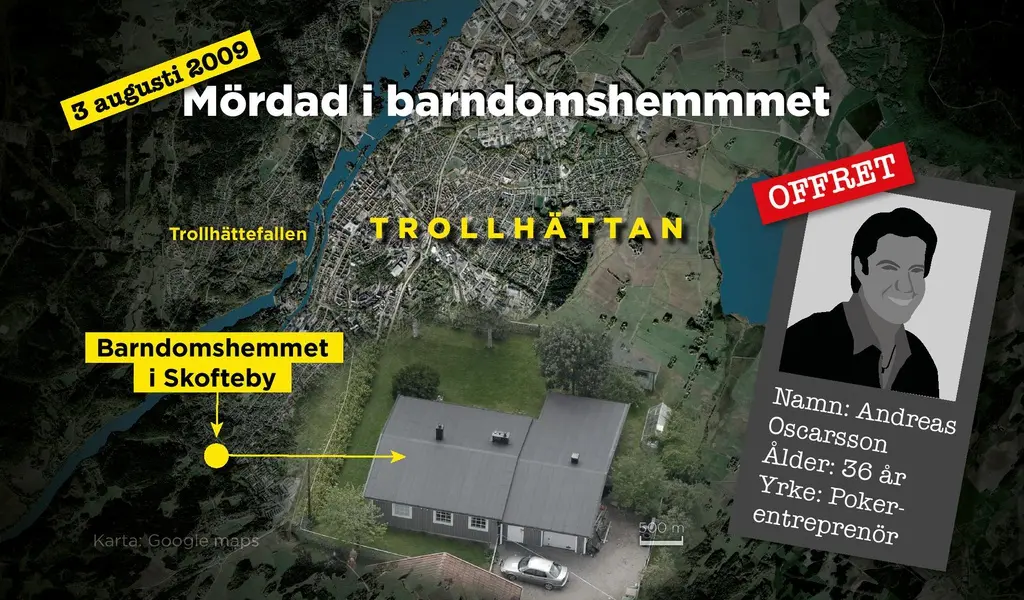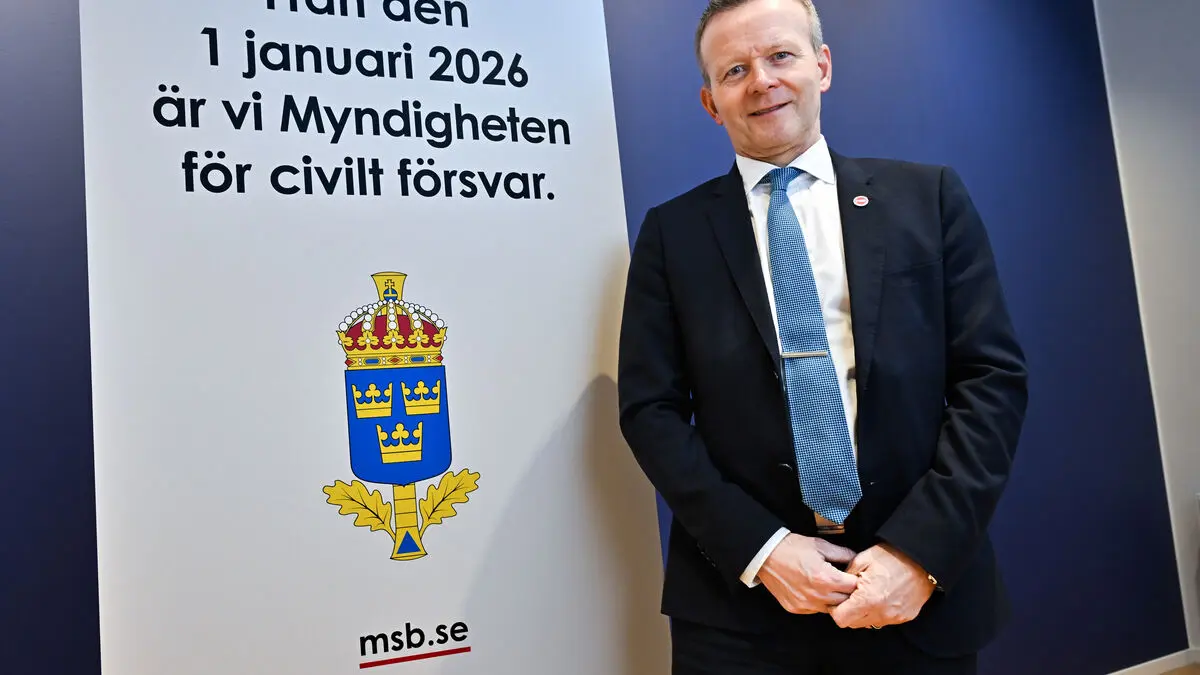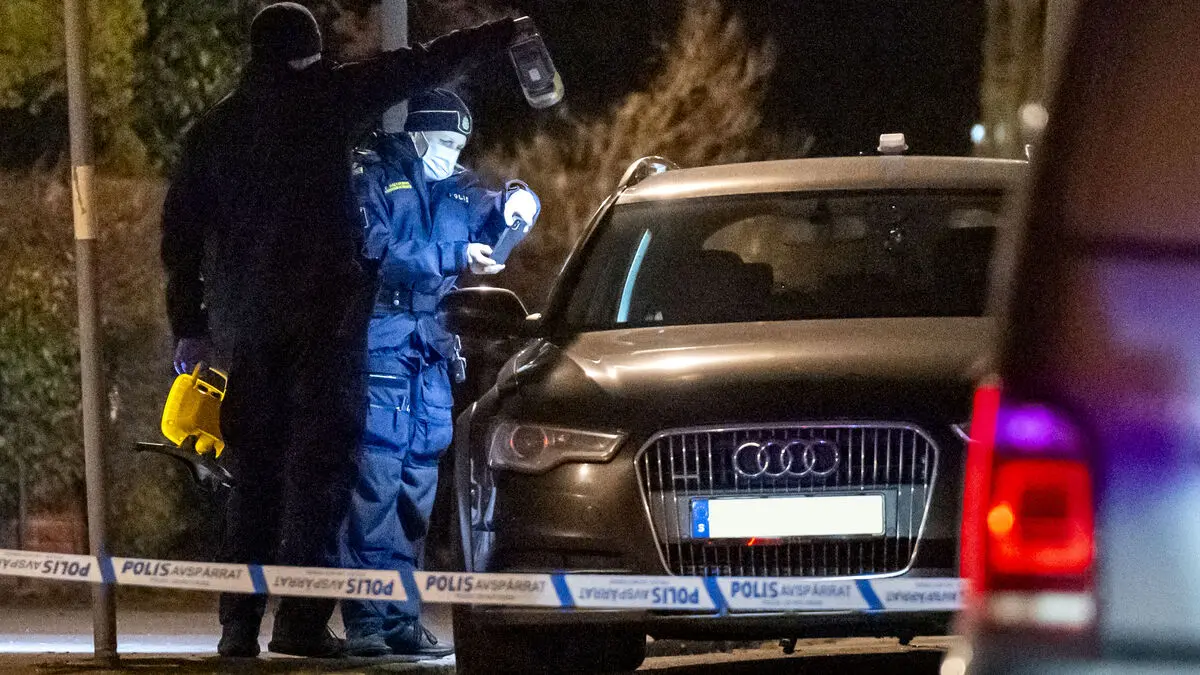Poker millionaire Andreas Oscarsson was found shot to death in his bed at home in his boyhood room in Trollhättan. His two-year-old son was sleeping deeply next to him.
Despite an extensive investigation, the case has remained unsolved for 15 years.
Someone out there knows, says retired police officer Sten-Rune Timmersjö.
The scene is like something out of a movie. The August twilight descends over the quiet residential area. Under the cover of darkness, a murderer enters one of the houses and points a silenced pistol at Andreas Oscarsson.
The 36-year-old entrepreneur has lived in New York for many years, but is visiting Sweden in the summer of 2009 to meet family, friends, and business acquaintances. In the safe haven of his childhood home, he is now shot to death with six shots in his own bed. The murderer disappears without a trace into the night.
When Andreas Oscarsson is found by his father the next day, his two-year-old son is still sleeping deeply next to the dead body.
Someone takes him out and shoots him without waking anyone or leaving any traces behind. Then it's not hard to figure out that a pro has been hired to do this, says retired police officer Sten-Rune Timmersjö, former head of the unit for serious crimes in Fyrbodal.
Was he being watched?
In the days leading up to the murder, Andreas Oscarsson meets friends and visits his mother in Dalsland. Several people notice a yellow motocross bike.
The driver behaved in a way that makes us convinced that the person was involved in the murder, says Thord Haraldsson, commissioner at the county criminal police in Trollhättan, to TTELA in September 2009.
In Trollhättan, a witness claims to have heard a motocross bike driving on a gravel road near the crime scene. The police believe it was transported there on a larger vehicle. They conclude that Oscarsson was being watched during his last days alive.
According to the police, there was a threat against the 36-year-old, who was about to testify in a trial about extortion related to organized crime. A restaurateur was charged with trying to extort Oscarsson's advisor for 14 million kronor, but was acquitted in both the district and appellate courts.
We looked into it, of course, but I can't say we got anywhere, says Sten-Rune Timmersjö.
Successful entrepreneur
Andreas Oscarsson moves to the US in the late 1990s, where he builds a successful company in online poker during the so-called "poker boom".
Among the investors is the company Ekstranda, with H&M heirs Stefan and Jan Bengtsson as part-owners, which invests around 1.8 million kronor in exchange for 25 percent of the shares in 2003.
The revenue skyrockets, and the valuation soars. When Ekstranda is bought out three years later, the purchase price is 50 million kronor, but new American legislation reduces the valuation, and the price is renegotiated to 36 million kronor.
The difference is what gives rise to the criminal case where Oscarsson is supposed to testify in the fall of 2009. According to the verdict, the accused restaurateur, through an alleged partnership with another shareholder in Ekstranda, claims to be entitled to the 14 million kronor.
The plaintiff, who represented Oscarsson in the deal, says he was threatened in the interrogation. In the summer of 2007, he is shot in the leg. The restaurateur is suspected of involvement but is cleared due to lack of evidence. During the trial, the advisor refuses to answer questions.
None of the shareholders in Ekstranda are suspected of any crime.
"Someone knows"
Sten-Rune Timmersjö concludes that the solution to the murder may lie in Oscarsson's business dealings.
It's close at hand to believe it, but I have no evidence for it. There's someone out there who knows. We've had some theories about who and what was behind it, but I wouldn't say it's police-proven.
After a year of intensive investigation, the leads went cold, and the murder has remained unsolved. No one has been suspected of the crime over the years, and no new tips have come in.
The case is now with the cold case group in Gothenburg. It's possible, says Timmersjö, that new technology could get things moving.
The case is still open, so I can't go into everything, but there are some things in custody that could be investigated, but where the technical possibility doesn't exist yet.
Since 2010, there is no statute of limitations for murder and manslaughter, which means that investigations of murders committed after July 1, 1985, are never closed.
Previously, the statute of limitations for murder was 25 years. It was abolished on the 25th anniversary of the murder of Prime Minister Olof Palme, an investigation that could thus continue.
When the police no longer make progress in investigations, the cases are transferred to special investigation groups that work with so-called cold cases. The groups exist in six of seven police regions.
Nationally, there are approximately 800 cold cases, according to the police.
A notable cold case is the double murder in Linköping in October 2004, which was solved with the help of DNA family research in 2020. The previously untested method was used as part of a pilot project.
A government inquiry has proposed a law change to allow the method to be used more widely from next year.





